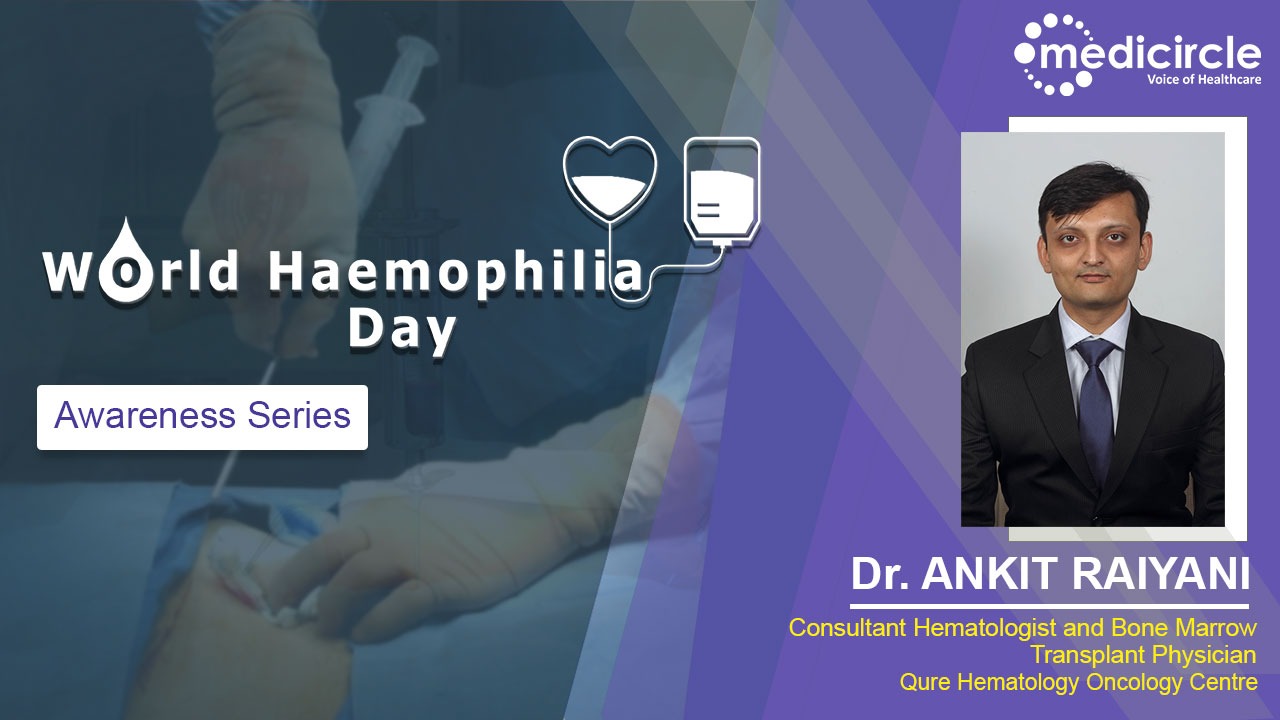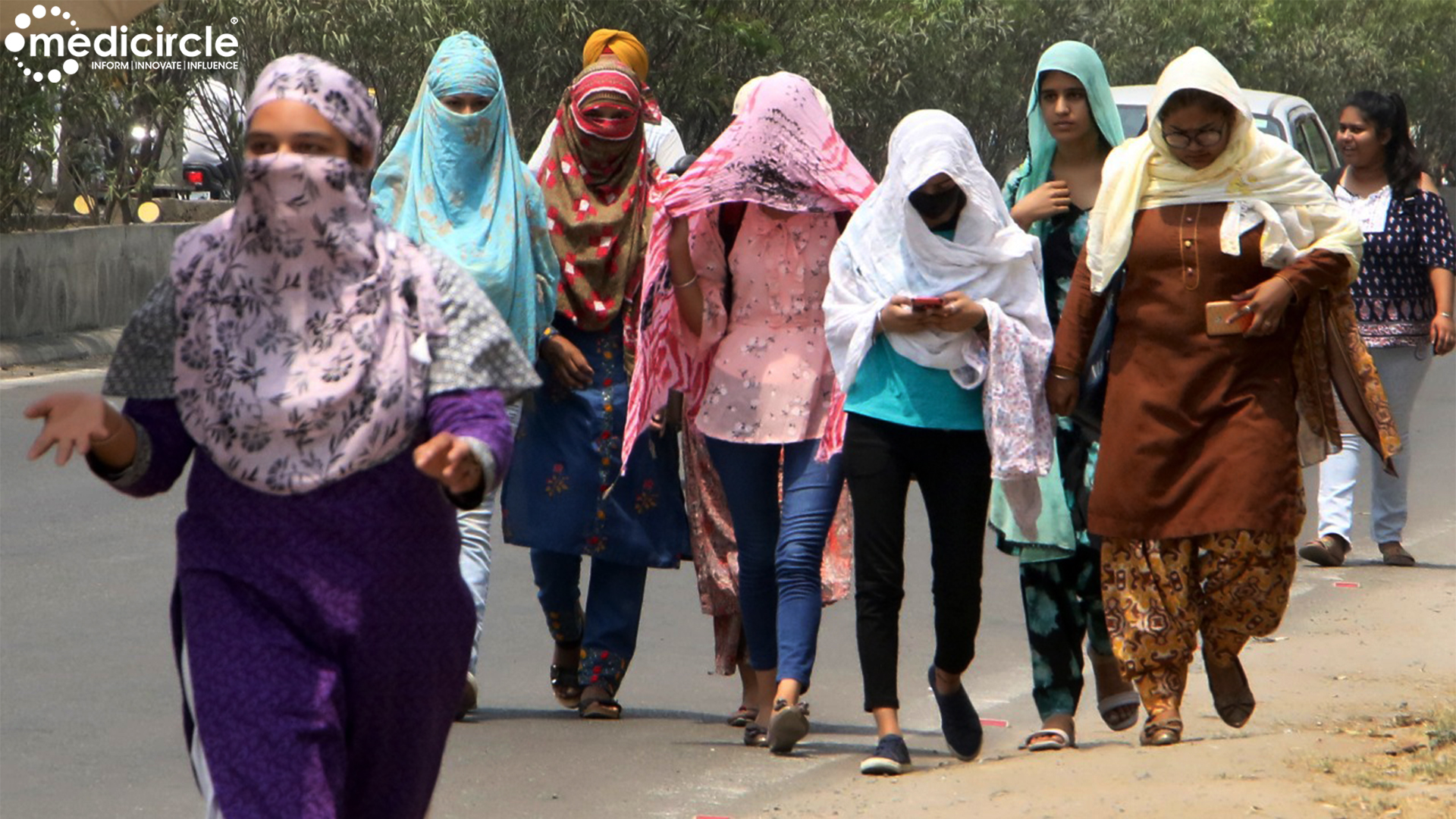When blood cannot clot properly, there is excessive bleeding and this medical condition is known as haemophilia. On the occasion of World Haemophilia Day, Medicircle is conducting an exclusive series featuring eminent hematologists to spread awareness about this bleeding disorder.
Dr. Ankit Raiyani is a Consultant Hematology and Bone Marrow Transplant Physician associated with Qure Hematology Oncology Centre. He has been associated with well-known hospitals like Sahyadri hospitals, ESIC Model Hospitals, and Lokmanya Tilak Municipal General Hospital in the past.
The normal cascade of blood clotting does not happen in patients with haemophilia leading to severe bleeding
Dr. Raiyani mentions, "Haemophilia is a bleeding disorder. In this condition, the patient's blood does not get clotted, normally. So generally, when the patient has sustained any trauma or injury, it is expected that the blood should clot normally to prevent further bleeding. PWH is the acronym given to patients with haemophilia. In them, the blood does not clot easily, and these patients tend to bleed more rapidly. It's an inherited condition and most of the time, this deficiency is passed down from mother to baby. It’s an X-linked genetic disorder which means that male child having only a single X chromosome is affected and the female child or mother who are the carriers are not affected because of the presence of two X chromosomes. Since the normal cascade of blood clotting does not happen in patients with haemophilia, they bleed easily and more severely as compared to the general population."
Symptoms of haemophilia start getting more evident with age
Dr. Raiyani, explains, "Whenever a child is born, in the first six to seven months, he/she is immobile so the signs and symptoms of haemophilia do not get evident. Once the child starts crawling and starts banging his or her head or bangs his knees, then swelling or hematomas start getting evident. A hematoma is a collection of blood. Knees may swell up, elbows may swell up and the child might get bruises on the forehead or any other place of the body. This is a common situation. During vaccination these children have more tendency of hematoma formation. So, there may be swelling at the injection site. These are the initial symptoms. When the child matures and puts on weight the symptoms may start getting even more severe."
Diagnosis of haemophilia
Dr. Raiyani informs, "Whenever a patient suffering from a bleeding disorder gets in touch with a hematologist, we test for clotting factor deficiency. Prothrombin Time (PT), and activated partial thromboplastin time (APTT). We take blood sample of the patient, remove the cells and take the plasma. In this plasma, we check how rapidly it gets clots. So, by that, we can know whether the patient has a normal clotting tendency or whether the patient is lagging in it. We further check factor deficiency. There are two types of factor deficiency, haemophilia A (deficiency factor VIII) and haemophilia B (deficiency of factor IX). The deficiency could be below 50%.
Another test is the genetic test. Nowadays, it's possible to directly check for the genetic mutation that is causing the disorder and it provides highly accurate results. By this we treat the patient more efficiently and can prevent the birth of a child who is suffering from haemophilia," says Dr. Raiyani.
The severity of bleeding depends on mild, moderate, or severe haemophilia
Dr. Raiyani explains, "We divide the patients into three groups – mild, moderate, and severe. In mild haemophilia, the patient has factor deficiency between 5 – 50 %. They may not bleed profusely in their lifetime, even with minor surgery like tooth removal or trivial trauma, and they are not aware of the situation. So many times, when these patients are about to go for major surgery and as a part of preoperative procedure PT and APTT tests, then haemophilia gets identified. These patients are more or less symptomatic and are diagnosed based on test reports.
Coming to moderate haemophilia, they do tend to bleed excessively, whenever there is excess trauma, they do not bleed without trauma. These patients are diagnosed between 10 to 20 years of age, because of one or two histories or episodes of excessive bleeding following trauma. So, they may require treatment at those particular times. They do not require continuous treatment to prevent bleeding.
Patients suffering from severe haemophilia have a factor VIII or factor IX deficiency of less than 1%. They get spontaneous bleeding. That means a patient may bleed without any external or internal trauma. So, these patients will require prophylactic treatment to prevent bleeding and the major bleeding sites are joints. There is joint bleeding, muscle bleeding, and internal bleeding and can be very life-threatening in certain situations. If the patient has sustained a minor accident or have had any minor surgery, he/she may bleed excessively. These patients require continuous factor VIII and factor IX replacement at least twice or thrice a week to sustain the level above 1%. Whenever the factor level is less than 1%, they have very severe symptoms. With age, these symptoms get aggravated. So they may have joint deformities, non-healing fractures of the bones, continuous blood loss, and might require blood products continuously," says Dr. Raiyani.
(Edited by Amrita Priya)

 Dr. Ankit Raiyani provides insights on causes, signs, and symptoms, diagnosis, and severity of haemophilia which is a helpful source of information to understand the disorder and accordingly be alert about it if a known person or family member shows such tendency.
Dr. Ankit Raiyani provides insights on causes, signs, and symptoms, diagnosis, and severity of haemophilia which is a helpful source of information to understand the disorder and accordingly be alert about it if a known person or family member shows such tendency.
















.jpg)












_elected_as_global_president_of_the_world_congress_of_ophthalmic_anaesthesia.jpg)



